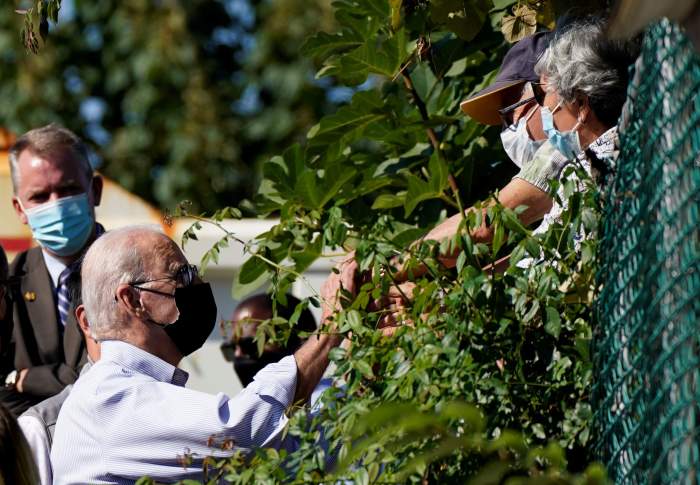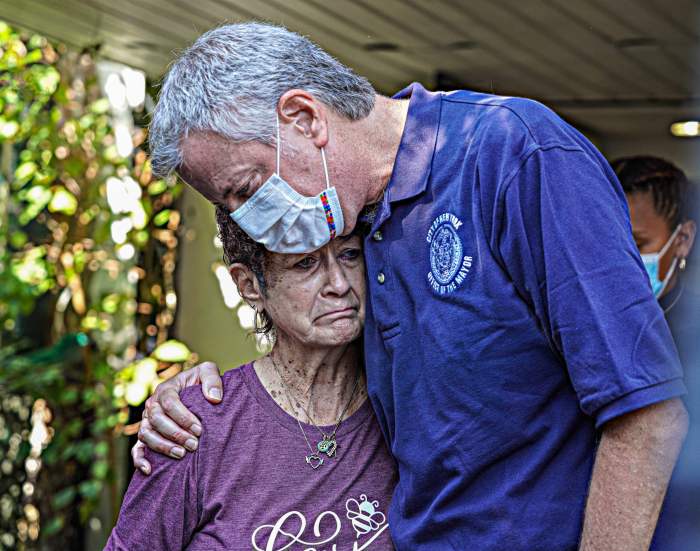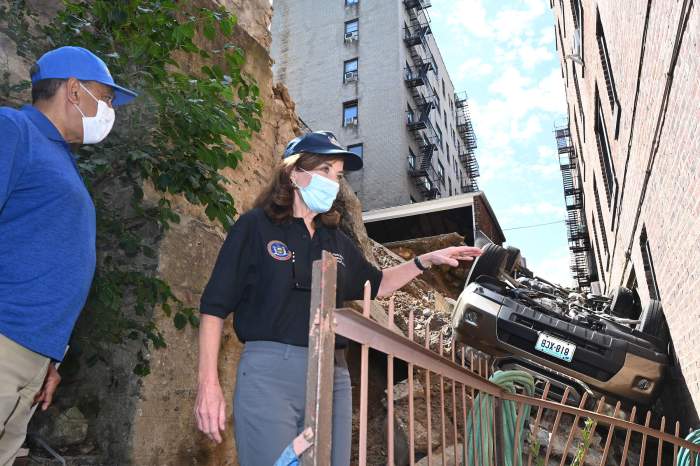Governor Kathy Hochul and other Queens elected officials paid homage to the victims of Hurricane Ida, one year after the deadly storm inundated the city and killed 11 people in the borough.
The governor issued a proclamation honoring the day as Hurricane Ida Remembrance Day on Sept. 1, saying the memories of the floods and destruction will stay with her.
“It was my first week on the job as governor. I will never forget what I saw in this community at that time,” Hochul said at Elmcor, a North Corona-based nonprofit whose senior center was closed for 10 months due to destruction caused by the floods.
“This storm, Ida, was Mother Nature at her fiercest and unsparing,” Hochul said.
Queens was hit the hardest by the storm, with 11 people killed out of 13 citywide, many of whom drowned in basement apartments.
The borough president called on officials to legalize those underground units in order to make them safer.
“We must work to legalize basements across New York City,” said Donovan Richards. “There was no county hit harder than Queens County during the pandemic, and then this storm comes along — it’s like a punch to the gut, just when we thought we were rebounding.”
A recent report by Comptroller Brad Lander suggested using the state’s Loft Law from the 1980s as a model to forge a path for the subterranean units to become legalized and regulated.
However, thousands of homeowners were left out to dry when they tried to seek reimbursements for flood damages from the city after its sewer system was completely overwhelmed by Ida.
The news site The City reported last month that all 4,703 New Yorkers who filed claims against the city were denied by Lander’s office based on a 115-year-old court ruling.
A Queens state lawmaker decried the move as a “grave injustice,” saying Thursday that city officials should be held responsible.
“Every single one of my neighbors was denied despite all of the damage that they had suffered. And that too is a grave injustice,” said state Sen. Jessica Ramos. “The city should be responsible for mitigating flood damage and sewage backup damage that takes place in our city.”
A record-shattering 3.75 inches an hour poured down onto parts of the Big Apple during last year’s storm, far above what the city’s aging network of underground pipes is able to handle.
Sewer capacity varies depending on the borough since the infrastructure’s designs were not standardized and up to borough presidents up until the 1970s, and in parts of the city like Queens there are many tubes only capable of channeling up to 1.5 inches, below the 1.75 inches the city aims for.


































